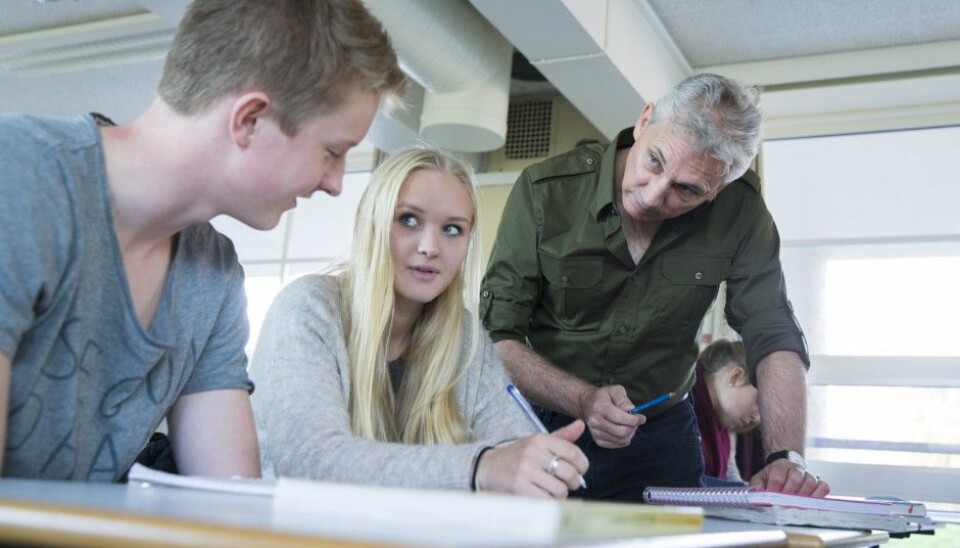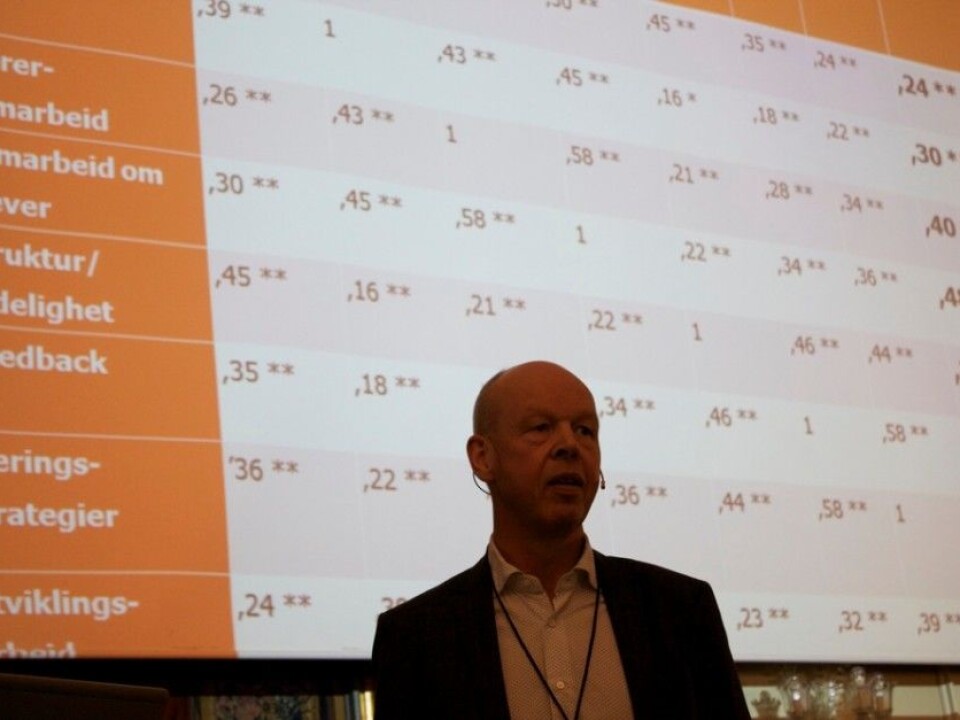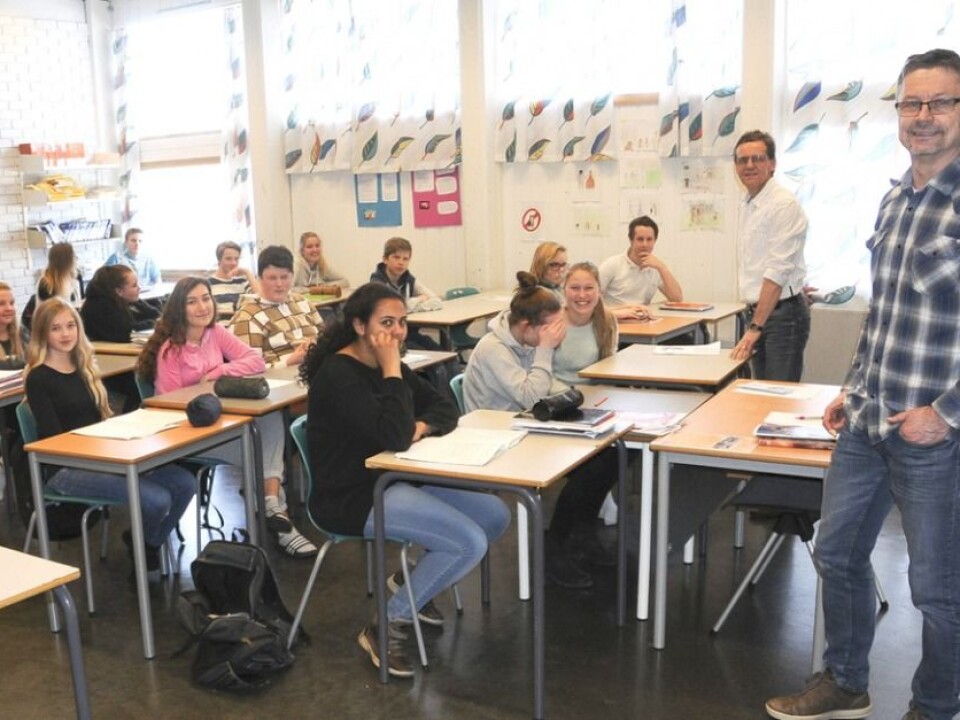
Education researcher points the way to good schools
Many people ask how schools can be improved. A Norwegian researcher says that a positive learning environment makes all the difference.
Denne artikkelen er over ti år gammel og kan inneholde utdatert informasjon.
In short, the learning environment in a school is everything- except for the teaching.
This is the view of Thomas Nordahl, one of Norway's best-known education researchers. With the research that has been done in recent years, says Nordahl, “we know a whole lot today about what creates good schools for students.”
“A school holds two worlds, the teaching world and the student world. Both have to function well for students to attain good results,” he says.
Creating a positive learning environment
Most education researchers concur that the learning environment is crucial for student learning, including world-renowned New Zealand researcher John Hattie. He advocates concentrating on various factors in the learning environment, and Nordahl has focused his research on just this.

A good classroom environment rests on relationships — between students, students and teachers, and with parents who care. School management and aesthetics also play a role.
“This is something students, parents, teachers, school authorities and politicians create together,” says Nordahl. “Local politicians can’t achieve it through the school budget alone.”
Nordahl’s eight points for a good learning environment
1) Having friends is most important
Having friends is often even more important than school itself for many young people. It’s hard to be a student if you are being bullied or harassed, and in the worst case, can lead to lifelong problems.

2) Teachers need to be adults
Good teaching requires teachers to be good leaders. The fundamental asymmetrical teacher-student relationship is important to maintain. Students want their teachers to be adults, and many young student teachers struggle with this adult role.
“The best leaders we have can probably be found in classrooms,” says Nordahl. And he adds another tip: be more proactive than reactive — speak up ahead of time instead of yelling after the fact.
3) Schools should have clear structure

Standards and rules guide communities. Walls provide structure that helps students focus, and maybe windows should be smaller, too.
Nordahl encourages schools to attend to repairs quickly. Research has shown that a school that is tidy and well cared for, where few things are broken, creates a better learning environment.
“If it’s tidy around you, it’s easier to stay tidy inside yourself,” he says.
4) Parents should talk positively about school

According to Nordahl, it’s all too easy for parents to contribute to a negative learning environment by speaking poorly of teachers or the school. The opposite is also true; research shows that speaking well of the school fosters a positive attitude toward school and learning in students.
Parents should show interest in their children’s school day, and ask them about their different subjects and activities.
5) Fathers should get involved
Focus more on homework getting done, and be okay with missing an occasional soccer practice. This is Nordahl’s recommendation to dads, who often are the ones getting their kids to sports practice.
“Especially when boys do poorly in school, we see that their fathers have minimum school engagement. Our research shows that it isn’t good for boys when fathers aren’t involved with school,” says Nordahl.
Or maybe some teachers should do what teachers did in the old days, that we know works: visit the homes of parents who show little interest in their child’s school results, and have a chat with them.
6) Students have to work at school
“Nothing is more important to learning than working at it while you’re in school,” says the research professor.
The students' own efforts to learn are the pivotal factor in school achievement, and nothing beats studying to reach one’s potential, according to the research.
7) Increase learning pressure
Teachers do this by being clear with students, expecting more from them, and by giving feedback and attention to students. Parents can naturally reinforce this, too.
Doing everything right is not the goal. Tolerance for students’ mistakes that arise in the course of their effort and learning can generate positive learning pressure.
“Unfortunately, in some schools it’s socially risky for a guy to be good at school,” says the professor.
8) More than one teaching method works
Teaching fads come and go, and many teachers are fed up with constantly adjusting to the latest trend.
“Good learning and good teaching aren’t about using a particular method. There are many effective methods and strategies. What appears to be working,” says Nordahl, “is that teachers figure out their own practices using research-based knowledge.”
Students seem to achieve the best learning outcomes in schools where the social and professional community are strong.
What ISN’T important
Nordahl is also interested in what does not explain the differences in learning that we see among students in school.
His research results show that the following things do not create better students.
- Parents' education level. Take Sogn og Fjordane county, for example, where parents have one of the lowest levels of education in Norway and students still do very well at school. Or consider the contrasting results between northern and southern Hedmark county communities, which have similar demographics. The differences lie primarily in communities’ commitment to their schools and to what degree a learning culture is fostered.
- Special needs education.
- Strong emphasis on individualized learning. This is often talked about in Norway as students’ "responsibility for their own learning," and does not seem to provide the best outcomes for students.
- Home-school communication.
- The amount of information sent to parents from the school and teacher.
- Class size. Although often pointed to, several international studies show that class size does not have much impact on how well students learn.
- Teachers’ subject-area expertise beyond the minimum needed to teach.
- Teacher development training. It may be ok for teachers, but it is questionable whether it adds to students’ learning.
Fancy foreign words do not serve to improve the learning environment, either. On the contrary, they tend to alienate parents. “Maybe the school is not aware that this is being used as a power strategy, but you can be absolutely sure that many parents notice,” says Nordahl.
“Once students start achieving better school results in Norway, we can stop caring so much about what doesn’t work,” he says. “Instead, we should invest more effort in challenging the culture that says school and education aren’t so important.”
Professor Thomas Nordahl is Head of the Centre for Studies of Educational Practice (SEPU) at Hedmark University College. More about SEPU here.
-------------------------------
Read the Norwegian version of this article at forskning.no



































